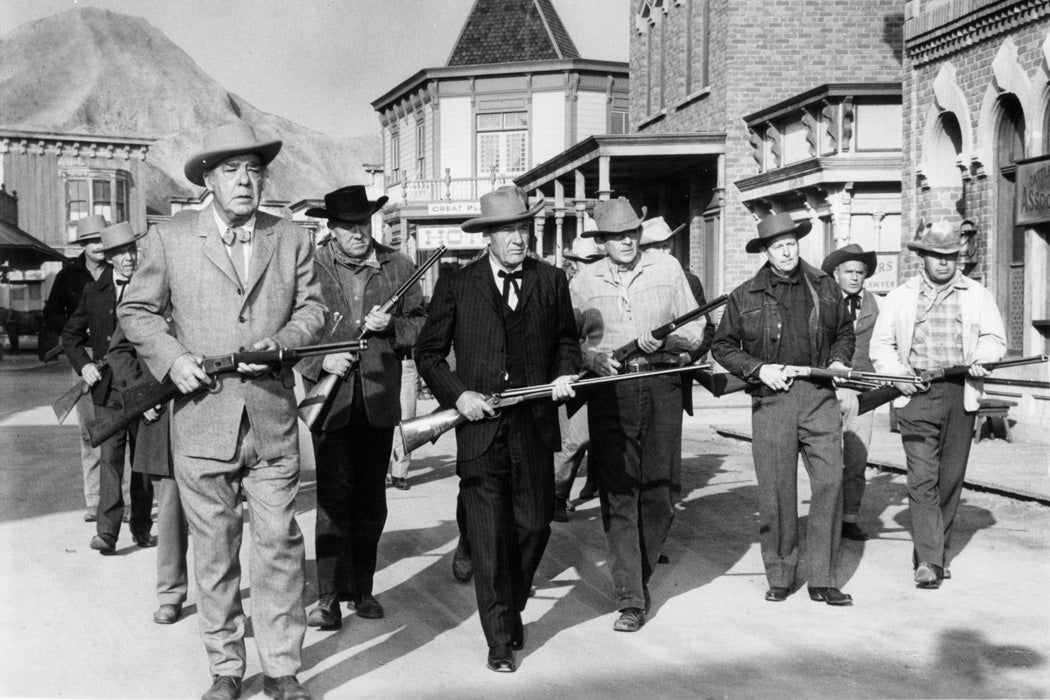What makes a person drop everything, pick up a gun, and take the law into their own hands? In the 1920s and 1930s, a bank robbery was often seen as worthy of vigilantism. Historian Paul Musgrave tells the surprising story.
Bankers lost the equivalent of $10 million during the 1920s alone, Musgrave writes, and faced business closures due to bank robbers. Law enforcement didn’t help. And so, the Indiana Bankers Association (IBA) decided to take matters into its own hands.
Musgrave places the IBA’s activities in a rich context of vigilantism, comparing them to another group, the Regulators of Northern Indiana, who, beginning in 1858, took vengeance on horse thieves, robbers, and others. He also draws a comparison with the “white caps,” homegrown terrorists like the Ku Klux Klan and others who used violence to intimidate minority groups and punish those of whom they disapproved. Musgrave makes distinctions between white caps’ secrecy and the public hierarchies of actual vigilante committees. Far from engaging in random lynchings or doing their work by night, these vigilantes enjoyed public support and a fair degree of transparency.
The vigilantes’ primary goal, aside from bringing bank robbers to what they saw as justice, was to spur the state into actually paying attention to bank crimes. As the number of banks grew and the rural economy faltered, writes Musgrave, Indiana law enforcement couldn’t (or wouldn’t) cope. Uneducated, unfit officials didn’t have the training to do their jobs—and the state didn’t adapt when criminals began doing things like stealing cars and using modern guns. Indiana didn’t have the Motor Vehicle Police, the predecessor to its state police, until 1921. Even once it was created, the Motor Vehicle Police was relatively limited in authority. Its primary job was to enforce new traffic laws, and only in 1927 did the agency get the mandate to conduct criminal investigations.
The vigilantes were more organized than you might think. Those recognized by the IBA had been deputized by sheriffs, were funded by local banks, and had plenty of guns. They set up roadblocks, conducted raids, and “produced results.”
Weekly Digest
The vigilantes’ work was controversial. Though for the most part they had law enforcement’s blessing, they weren’t all that beloved by members of the pubic who believed they represented a kind of Wild-West justice. “In a time of economic depression, such as the 1920s in the rural Midwest,” writes Musgrave, “bankers were hardly popular figures; not only did they inspire envy because of their association with money, but they were also the agents of the financial system responsible for such tasks as foreclosing on family farms.” Therefore, some bank robbers were regarded as celebrities, not villains.
Bank vigilantes were short-lived. In 1933, Indiana’s governor consolidated the Motor Vehicle Police into a real state police, and bankers used their resources to outfit them instead of going on raids themselves. With bureaucracy came more due process and less crime. But according to Musgrove, the spirit of vigilantism—and the criminal celebrity it unthinkingly fueled—never really died. “The vigilantes may have suspended their operations, but the values they represented are probably still at large.”







